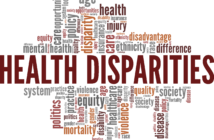Catalyzed by the COVID-19 pandemic and supported by the aging American public, home-based care is being hailed as the next “big thing” in healthcare. Last year, McKinsey published a report predicting that 25% of the total cost of care for Medicare and Medicare Advantage beneficiaries could shift from traditional facilities to the home by 2025 (reference 1). That’s a three- to fourfold increase in services being delivered in the home environment. As virtual care, remote patient monitoring and artificial intelligence continue to advance, more acute patients can be managed in the home setting with no reduction in quality of care.
This must be reconciled with other emerging statistics, including the drastic increase in home healthcare denials. Home health agency rejection rates have increased by 40% since pre-pandemic levels, peaking in late 2022 (reference 2). Staffing shortages and capacity constraints play a role, but concerns over managing patients’ growing psychosocial complexity are also rising (referral data reflects drug and alcohol use among home health patients is up 15% in the last three years) (reference 3).
This clash sits at the intersection of three growing healthcare priorities: healthcare worker safety, health equity and home-based care. Reconciling these competing forces will be key to shaping the future of healthcare delivery.
WORKER SAFETY
Last October, a visiting nurse from Willimantic, Connecticut, was found murdered in the basement of the halfway house in which her patient was living. She had been a nurse for 36 years, with the last 10 years providing home care services. That patient is currently in custody awaiting formal charges for her murder.
According to the U.S. Bureau of Labor Statistics, in 2018, 73% of all nonfatal workplace violence occurrences involved healthcare workers (reference 4). Given the underreporting of violence within healthcare professions, this is likely an underestimate of the true prevalence. Following the heroism of healthcare workers during the COVID-19 pandemic, there has been growing attention (both within the industry and in the general public) to the occupational risks within healthcare, including violence against its workers. This resulted in the introduction of H.R.1195—the Workplace Violence Prevention for Health Care and Social Service Workers Act, which passed in the House of Representatives in 2021 but not the Senate.
While the prevalence of violence against healthcare workers is well recognized in the acute setting, it is at a higher rate for clinicians working in home healthcare. Home health workers encounter similar occupational hazards as their colleagues employed in hospital or other medical settings. However, they are more likely to be alone and face home setting-specific risks, such as unpredictability and decreased control of their environment. Nearly half (41.8%) of home health workers experience non-physical violence, and over one-third (36.4%) suffer physical violence, with patient factors like violence history or mental illness/substance use disorders further elevating the risk (references 5 and 6). Not only is this unconscionable—it contributes to the growing scarcity of home health resources the system is currently experiencing.
The need to keep home health workers safe drives agencies to deny services for many reasons, including unsafe neighborhoods or “blackout areas,” certain high-risk diagnoses such as mental illness or substance use, patient non-adherence and more. While the decision to deny for worker safety is understandable, the consequences are far-reaching for both patient care and health equity.
HEALTH EQUITY
Consider this scenario: A 65-year-old man with a history of schizophrenia is currently psychiatrically stable and recently homelessness. He has diabetes and is seen frequently in the emergency department in need of wound care on his feet. The hospital social worker, in collaboration with the local board of social services, is able to secure a room at a nearby motel where he can stay. He requires ongoing wound care and diabetes education and is considered homebound. His nurse case manager refers him for home nursing visits, but his referral is declined due to safety concerns, both due to his psychosocial presentation and the fact that he is staying in a motel that is used as homeless diversion and therefore is considered unsafe by the agency.
CMS defines health equity as “the attainment of the highest level of health for all people, where everyone has a fair and just opportunity to attain their optimal health regardless of race, ethnicity, disability, sexual orientation, gender identity, socioeconomic status, geography, preferred language and other factors that affect access to care and health outcomes” (reference 7). Health equity initiatives are often intertwined with social determinants of health and health-related social needs—all of which have been a focus of nurse and social work case managers for decades. Across the country (and globe), health systems and governmental bodies alike are now catching up to the importance of health equity and its impact on the healthcare system.
Rates of mental illness and drug use are higher among individuals living below the poverty level and those with co-occurring health-related social needs. It is these same individuals who are more likely to live in unsafe neighborhoods or buildings. While simplistic connections between poverty and violence are harmful, specific structural inequities like economic hardship, social exclusion and concentrated disadvantage can indeed correlate with increased prevalence of violence. Consequently, the individuals in most need of support from a health equity perspective are also those most likely to be denied services due to concern for worker safety.
Recently, health systems have begun “flagging” patients at risk for violence in their electronic health records. A 2022 cohort study in JAMA found that behavior flags in the emergency department were more likely to be applied to black patients than white patients, and there were significant differences in ED clinical care metrics, including flagged patients having longer wait times and being less likely to undergo laboratory testing and imaging, when controlling for clinical scenarios. The article highlighted concerns that “behavioral flags are inequitably deployed […], replicating societal biases for subsequent waves of assumed criminality” (reference 8). Both the decision to enter the flag, and the clinician’s response to seeing the flag, were vulnerable to bias and impacted patient outcomes.
Ultimately, in order to keep their clinicians safe, healthcare organizations are assessing an individual’s potential for future violence, an act that is highly susceptible to implicit bias. Perceived risk is often subjective—and the act of stratifying on this is likely to disproportionately exclude marginalized communities from accessing home-based services, thus exacerbating existing health disparities and further entrenching inequities in the very system seeking to provide care closer to home.
HOME-BASED CARE
Perhaps the most popular topic in home-based care right now is the evolution of Hospital-at Home (HaH). HaH programs are rapidly expanding across the country. These programs have been around in other countries for several decades and first debuted in the U.S. via a Johns Hopkins pilot program in 1995. Sporadic programs would surface every few years until the COVID-19 pandemic and CMS’s Hospital without Walls initiative spurred extensive adoption. The number of hospitals/health systems offering HaH programs doubled from 2021 to 2023, and the market is projected to reach 300 billion by 2028 (reference 9). The U.S. Bureau of Labor Statistics predicts the sector will grow by 21% by 2031, tripling average industry growth.
While HaH programs may be novel (or at least buzzworthy), the trend toward care at home has been present since the Inpatient Prospective Payment System was introduced in the 1980s. Recent emergence of value-based care, episodic payment models and shared risk contracts have only accelerated this shift.
Despite the impressive projections, there remain some hurdles to providing more care in the home setting: limited patient suitability, reimbursement uncertainties, regulatory complexities and workforce challenges—to name a few. Examining this shift through the lens of equity and potential unintended consequences brings forward additional questions. How will this shift to home-based care impact our most vulnerable patients, those who are homeless or for whom their home is unsafe? What about those living in social isolation or impacted by the digital divide? Or those already living in care deserts? And how do we protect healthcare workers when more and more care is provided outside the controlled hospital environment?
CONCLUSION
In 1994, William Kissick introduced the concept of the healthcare “Iron Triangle” in his book Medicine’s Dilemmas. The idea was that healthcare cost, quality and access are so intrinsically linked that advancements in one area could only come at the expense of the others (reference 10). For 30 years, healthcare scholars and leaders alike have studied this concept, crusading toward a way to break the “triangle.”
Home-based care, healthcare worker safety and health equity are also connected through inverse relationships. This is the next iron triangle for nurse and social work case managers, who will be on the front lines as these scenarios develop. Case managers, particularly those with a social work background, must seize this opportunity to lead the charge. Their social justice lens, trauma-informed care expertise and advocacy skills are vital tools for building a more equitable and effective care delivery system in the face of rapid modernization. Steps to mitigate must including implicit bias training, innovative care team models, rigorous application of validated criteria when assessing patients and unwavering cross-sector partnerships.
During Social Work Month, let us commit to ensuring that healthcare’s next frontier—care at home—is built on a foundation of worker safety, health equity and unwavering dedication to serving all communities with compassion and justice.





